Casio GW6900-1 Handleiding
Bekijk gratis de handleiding van Casio GW6900-1 (6 pagina’s), behorend tot de categorie Horloge. Deze gids werd als nuttig beoordeeld door 66 mensen en kreeg gemiddeld 3.5 sterren uit 33.5 reviews. Heb je een vraag over Casio GW6900-1 of wil je andere gebruikers van dit product iets vragen? Stel een vraag
Pagina 1/6

Operation Guide 3179
1
MO0905- AE
Getting Acquainted
Congratulations upon your selection of this CASIO watch. To get the most out of your
purchase, be sure to read this manual carefully.
Keep the watch exposed to bright light
The electricity generated by the solar cell of the watch is
stored by a rechargeable battery. Leaving or using the
watch where it is not exposed to light causes the battery
to run down. Make sure the watch is exposed to light as
much as possible.
• When you are not wearing the watch on your wrist,
position the face so it is pointed at a source of bright
light.
• You should try to keep the watch outside of your sleeve
as much as possible. Charging is reduced significantly if
the face is covered only partially.
l
l
l
l
l
l
l
l
l
l
l
Bright Light
Solar cell
All
functions
enabled
LEVEL 1
LEVEL 2
LEVEL 3
LEVEL 4
Charge
Rechargeable battery
Bright Light
Electrical
energy
Solar cell
(Converts light to
electrical power.)
LEVEL 1
LEVEL 2
LEVEL 3
LEVEL 4
Some or all
functions
disabled
Dis-
charge
Battery charges in the light. Battery discharges in the dark.
• The watch continues to operate, even when it is not exposed to light. Leaving the
watch in the dark can cause the battery to run down, which will result in some watch
functions to be disabled. If the battery goes dead, you will have to re-configure watch
settings after recharging. To ensure normal watch operation, be sure to keep it
exposed to light as much as possible.
• The actual level at which some functions are disabled depends on the watch model.
• Frequent display illumination can run down the battery quickly and require charging.
The following guidelines give an idea of the charging time required to recover from a
single illumination operation.
Approximately 5 minutes exposure to bright sunlight coming in through a window
Approximately about 8 hours exposure to indoor fluorescent lighting
• Be sure to read “Power Supply” for important information you need to know
when exposing the watch to bright light.
If the display of the watch is blank...
If the display of the watch is blank, it means that the watch’s Power Saving function
has turned off the display to conserve power.
• See “Power Saving Function” for more information.
Note that CASIO COMPUTER CO., LTD. assumes no responsibility for any damage
or loss suffered by you or any third party arising through the use of this product or
its malfunction.
About This Manual
• Depending on the model of your watch, display text appears either as dark figures
on a light background or light figures on a dark background. All sample displays in
this manual are shown using dark figures on a light background.
• Button operations are indicated using the letters shown in the illustration.
• Each section of this manual provides you with the information you need to perform
operations in each mode. Fur ther details and technical information can be found in
the “Reference” section.
General Guide
• Press C to change from mode to mode.
• In any mode (except when a setting screen is on the display), press L to illuminate
the display.
Timekeeping Mode
Press C.
Countdown Timer Mode Stopwatch Mode
Alarm Mode
▲
▲
World Time Mode
▲
▲
▲
Radio-controlled Atomic Timekeeping
This watch receives a time calibration signal and updates its time setting accordingly.
• This watch is designed to pick up the time calibration signals transmitted in Germany
(Mainflingen), England (Anthorn), the United States (Fort Collins), China (Shangqiu),
and Japan (Fukushima, Fukuoka/Saga).
Current Time Setting
This watch adjusts its time setting automatically in accordance with a time calibration
signal. You also can perform a manual procedure to set the time and date, when
necessary.
• The first thing you should do after purchasing this watch is to specify your
Home City (the city where you normally will use the watch). For more
information, see “To specify your Home City” below.
• When using the watch outside the areas covered by the time signal transmitters, you
will have to adjust the current time setting manually as required. See “Timekeeping”
for more information about manual time settings.
• The U.S. time calibration signal can be picked up by the watch while in North
America. The term “North America” in this manual refers to the area that consists of
Canada, the continental United States, and Mexico.
To specify your Home City
1. In the Timekeeping Mode, hold down A until the city
code starts to flash, which indicates the setting screen.
2. Press D B (east) and (west) to select the city code
you want to use as your Home City.
LIS, LON
: Lisbon, London
MAD BER STO , PAR, ROM, , : Madrid, Paris,
Rome, Berlin, Stockholm
ATH : Athens
MOW : Moscow
HKG BJS TPE, , : Hong Kong, Beijing, Taipei
SEL, TYO : Seoul, Tokyo
HNL : Honolulu
ANC : Anchorage
l
l
l
l
l
l
l
l
l
l
l
l
l
l
l
l
l
l
l
l
l
l
l
l
l
l
l
l
ll
l
l
l
l
l
l
l
l
l
l
l
l
l
l
l
l
l
l
l
l
l
l
l
l
l
l
l
l
l
l
l
l
l
l
l
City code
PM indicator
Seconds
Hour : Minutes
YVR LAX, : Vancouver, Los Angeles
YEA DEN, : Edmonton, Denver
MEX CHI, : Mexico City, Chicago
NYC : New York
YHZ : Halifax
YYT : St.Johns
3. Press A to exit the setting screen.
• Normally, your watch should show the correct time as soon as you select your Home
City code. If it does not, it should adjust automatically after the next auto receive
operation (in the middle of the night). You also can perform manual receive or you
can set the time manually.
• The watch will receive the time calibration signal automatically from the applicable
transmitter (in the middle of the night) and update its settings accordingly. For
information about the relationship between city codes and transmitters, see
“Important!” under “Time Calibration Signal Reception” and “Transmitters”.
• See the maps under “Approximate Reception Ranges” for information about the
reception ranges of the watch.
• You can disable time signal reception, if you want. See “To turn auto receive on and
off” for more information.
• Under factory default settings, auto receive is turned off for all of the following city
codes: MOW (Moscow), (Honolulu), and (Anchorage). For details aboutHNL ANC
turning on auto receive for these city codes, see “To turn auto receive on and off”.
Time Calibration Signal Reception
There are two different methods you can use to receive the time calibration signal:
auto receive and manual receive.
• Auto Receive
With auto receive, the watch receives the time calibration signal automatically up to
6 times a day (5 times a day for the Chinese calibration signal). When any auto
receive is successful, the remaining auto receive operations are not performed. For
more information, see “About Auto Receive”.
• Manual Receive
Manual receive lets you start a time calibration receive operation with the press of a
button. For more information, see “To perform manual receive”.
Important!
• When getting ready to receive the time calibration signal, position the watch as
shown in the nearby illustration, with its 12 o’clock side pointing towards a window.
This watch is designed to receive a time calibration signal late at night. Because of
this, you should place the watch near a window as shown in the illustration when you
take it off at night. Make sure there are no metal objects nearby.
12 o’clock
or
• Make sure the watch is facing the right way.
• Proper signal reception can be difficult or even impossible under the conditions listed
below.
Inside or
among
buildings
Inside a
vehicle
Near a
construction
site, airport,
or other
sources of
electrical
noise
Near high-
tension power
lines
Near
household
appliances,
office
equipment,
or a mobile
phone
Among or
behind
mountains

Operation Guide 3179
2
• Signal reception normally is better at night than during the day.
• Time calibration signal reception takes from two to seven minutes, but in some
cases it can take as long as 14 minutes. Take care that you do not perform any
button operations or move the watch during this time.
• The time calibration signal the watch will attempt to pick up depends on its current
Home City code setting as shown below.
Home City Code
LIS, LON, MAD, PAR, ROM,
BER, STO, ATH, MOW*
HKG, BJS
TPE, SEL, TYO
HNL*, ANC*, YVR, LAX, YEA,
DEN, MEX, CHI, NYC, YHZ, YYT
Frequency
60.0 kHz
77.5 kHz
68.5 kHz
40.0 kHz
60.0 kHz
60.0 kHz
Transmitter
Anthorn (England)
Mainflingen (Germany)
Shangqiu City (China)
Fukushima (Japan)
Fukuoka/Saga (Japan)
Fort Collins, Colorado
(the United States)
* The areas covered by the HNL, ANC, and MOW city codes are quite far from the
time calibration signal transmitters, and so certain conditions may cause problems
with signal reception.
• Calibration signal reception is disabled while a countdown timer operation is in
progress.
Approximate Reception Ranges
U.K. and German Signals
Anthorn
Mainflingen
1,500 kilometers
500 kilometers
The Anthorn signal
is receivable within
this area.
U.S. Signal
Fort Collins
2,000 miles
(3,000 kilometers)
600 miles
(1,000 kilometers)
Signals are receivable in the Taiwan area when reception conditions are good.
Shangqiu
1,000 kilometers
1,000 kilometers
Fukuoka/Saga
500 kilometers
Fukushima
500 kilometers
500 kilometers
Changchun
Beijing
1,500 kilometers
Shanghai
Chengdu
Japan Signals
China Signal
Hong Kong
• Signal reception may not be possible at the distances noted below during certain
times of the year or day. Radio interference also may cause problems with reception.
Mainflingen (Germany) or Anthorn (England) transmitters: 500 kilometers
(310 miles)
Fort Collins (United States) transmitter: 600 miles (1,000 kilometers)
Fukushima or Fukuoka/Saga (Japan) transmitters: 500 kilometers (310 miles)
Shangqiu (China) transmitter: 1,500 kilometers (910 miles)
• Even when the watch is within the reception range of the transmitter, signal
reception will be impossible if the signal is blocked by mountains or other geological
formations between the watch and signal source.
• Signal reception is affected by weather, atmospheric conditions, and seasonal
changes.
• See the information under “Signal Reception Troubleshooting” if you experience
problems with time calibration signal reception.
About Auto Receive
The watch receives the time calibration signal automatically up to 6 times a day
(5 times a day for the Chinese calibration signal). When any auto receive is
successful, the remaining auto receive operations are not performed. The reception
schedule (calibration times) depends on your currently selected Home City, and
whether standard time or Daylight Saving Time is selected for your Home City.
2:00 am
3:00 am
3:00 am
4:00 am
4:00 am
5:00 am
5:00 am
Midnight*
3:00 am
4:00 am
4:00 am
5:00 am
5:00 am
Midnight*
Midnight*
1:00 am*
4:00 am
5:00 am
5:00 am
Midnight*
Midnight*
1:00 am*
1:00 am*
2:00 am*
5:00 am
Midnight*
Midnight*
1:00 am*
1:00 am*
2:00 am*
2:00 am*
3:00 am*
Standard Time
Daylight Saving Time
Standard Time
Daylight Saving Time
Standard Time
Daylight Saving Time
Standard Time
Daylight Saving Time
1:00 am
2:00 am
2:00 am
3:00 am
3:00 am
4:00 am
4:00 am
5:00 am
Midnight*
1:00 am*
1:00 am*
2:00 am*
2:00 am*
3:00 am*
3:00 am*
4:00 am*
LIS
LON
MAD
PAR
ROM
BER
STO
ATH
MOW
Your Home City Auto Receive Start Times
1 2 3 4 5 6
*Next day
HKG
BJS
TPE
SEL
TYO
HNL
ANC
YVR
LAX
YEA
DEN
MEX
CHI
NYC
YHZ
YYT
Standard Time and
Daylight Saving Time
Standard Time
Standard Time and
Daylight Saving Time
1:00 am
Midnight
Midnight
2:00 am
1:00 am
1:00 am
3:00 am
2:00 am
2:00 am
4:00 am
3:00 am
3:00 am
5:00 am
4:00 am
4:00 am
5:00 am
5:00 am
Note
• When a calibration time is reached, the watch will receive the calibration signal only
if it is in either the Timekeeping Mode or World Time Mode. Reception is not
performed if a calibration time is reached while you are configuring settings.
• Auto receive of the calibration signal is designed to be performed early in the
morning, while you sleep (provided that the Timekeeping Mode time is set correctly).
Before going to bed for the night, remove the watch from your wrist, and put it in a
location where it can receive the signal easily.
• The watch receives the calibration signal for two to seven minutes everyday when
the time in the Timekeeping Mode reaches a calibration time. Do not perform any
button operation within seven minutes before or after the calibration times. Doing so
can interfere with correct calibration.
• Remember that reception of the calibration signal depends on the current time in the
Timekeeping Mode. The receive operation will be performed whenever the display
shows any one of the calibration times, regardless of whether or not the displayed
time actually is the correct time.
About the Signal Strength Indicator
The signal strength indicator shows the strength of the calibration signal being
received. For best reception, be sure to keep the watch in a location where signal
strength is strongest. The signal strength indicator is displayed while an auto or
manual receive operation is in progress.
l
l
l
ll
l
l
l
l
l
l
l
l
l
l
l
l
l
l
l
l
l
l
l
l
l
l
l
l
l
l
l
l
l
l
l
l
l
l
l
l
l
l
l
l
l
l
l
l
l
l
l
l
l
l
l
l
l
l
l
l
l
l
l
l
l
l
l
l
l
l
l
l
l
l
l
l
l
l
l
l
l
l
l
l
l
l
l
l
l
l
l
l
l
l
l
l
l
ll
l
l
l
l
l
l
l
l
l
l
l
l
l
l
l
l
l
l
l
l
l
l
l
l
l
l
l
l
l
l
l
l
l
l
l
l
l
l
l
l
l
l
l
l
l
RCVD indicator
Signal strength indicator
Strong
(Level 3)
Weak
(Level 1)
• Even in an area where signal strength is strong, it takes about 10 seconds for signal
reception to stabilize enough for the signal strength indicator to indicate signal
strength.
• Use the signal strength indicator as a guide for checking signal strength and for
finding the best location for the watch during signal receive operations.
• Following reception of the time calibration signal and calibration of the watch’s time
setting, the RCVD indicator will remain on the display in all modes. The RCVD
indicator will not be displayed if signal reception was unsuccessful or after you adjust
the current time setting manually.
• The RCVD indicator is displayed only when the watch is able to receive both time
and date data successfully. It does not appear when only time data is received.
• The RCVD indicator indicates that at least one of the auto calibration signal receive
operations was successful. Note, however, that the RCVD indicator disappears from
the display each day when the first auto receive operation of the day is performed.
To perform manual receive
1. Enter the Timekeeping Mode.
2. Hold down D for about two seconds until RCVD starts
to flash on the display. This indicates that manual
receive is in progress.
• Time calibration signal reception takes from two to
seven minutes. Take care that you do not perform
any button operations or move the watch during this
time.
• If the receive operation is successful, the reception
date and time appear on the display, along with the
GET indicator.
3. After manual receive is complete, press D to return to
normal timekeeping.
• The watch also will return to normal timekeeping if you
do not perform any button operation for about one or
two minutes.
Receiving
Receive successful
l
l
l
l
l
l
l
l
l
l
l
l
l
l
l
l
l
l
l
l
l
l
l
l
l
l
l
l
l
l
l
l
l
l
l
l
l
l
l
l
l
l
l
l
l
l
l
l
l
l
l
l
l
l
l
l
l
l
l
l
l
l
l
l
l
l
l
l
l
l
l
l
l
l
l
l
l
l
l
l
l
l
l
l
l
l
l
l
l
l
l
l
l
l
l
l
l
l
l
l
l
l
l
l
l
l
l
l
l
l
l
l
l
l
l
l
l
l
l
l
l
l
l
l
l
l
l
l
l
l
l
l
l
l
l
l
l
l
l
l
l
l
l
l
l
l
l
l
l
l
• If the latest reception fails but a previous reception was
successful, an indicator (RCVD) will be on the display.
• The watch will return to normal timekeeping without
changing the time setting if you press or if you do notD
perform any button operation for about one or two
minutes.
Note
• To interrupt a receive operation and return to normal
timekeeping, press D.
If there was a previously
successful reception
If no reception was
successful
Receive failed
To turn auto receive on and off
1. In the Timekeeping Mode, press D to display the last
successful receive time and date screen.
2. Hold down A until the current auto receive setting (ON
or OFF) starts to flash. This is the setting screen.
• Note that the setting screen will not appear if the
currently selected Home City is one that does not
support time calibration reception.
3. Press D to toggle auto receive on (ON) and off
(OFF).
4. Press A to exit the setting screen.
• For information about city codes that support signal
receive, see “To specify your Home City”.
l
l
l
l
l
l
l
l
l
l
l
l
l
l
l
l
l
l
l
l
l
l
l
l
l
l
l
l
l
l
l
l
l
l
l
l
l
l
l
l
l
l
l
l
l
l
l
l
l
l
l
l
l
l
l
l
l
l
l
l
l
l
l
l
l
l
l
l
l
l
l
l
l
l
l
l
l
l
l
l
l
l
l
l
l
l
l
l
l
l
l
l
l
l
l
l
l
l
l
l
l
l
l
l
l
l
l
l
l
l
l
l
l
l
l
l
l
l
l
l
l
l
l
l
l
l
l
l
l
l
l
l
l
l
l
l
l
l
l
l
l
l
l
l
l
l
l
l
l
l
l
l
l
l
l
l
l
l
l
l
l
l
l
l
l
On/Off status
To check the latest signal reception results
Press D to view the last successful receive time and
date. Press D again to return to the previous screen.

Operation Guide 3179
3
• The watch is not in the
Timekeeping Mode.
• Your current Home City is not one
of the following: LIS, , , LON MAD
PAR, ROM, BER, STO, ATH,
MOW,
HKG
, , , , BJS TPE SEL TYO
,
HNL, ANC, YVR, LAX, YEA, DEN,
MEX CHI, , NYC YHZ YYT, , or
• You changed the time setting
manually.
• The DST setting was changed
manually in the World Time Mode.
• You pressed a button while signal
receive was in progress.
• Even if receive is successful, the
RCVD indicator will disappear
from the display each day when
the first auto receive operation of
the day is performed.
• Time data (hour, minutes, seconds)
only was received during the last
receive operation. The RCVD
indicator appears only when time
data and date data (year, month,
day) are both received.
Cannot perform
manual receive.
Auto receive is
turned on, but
the RCVD
indicator does
not appear on
the display.
• Enter the Timekeeping
Mode and try again.
• Select LIS, LON, MAD,
PAR, ROM, BER, STO,
ATH, MOW, HKG, BJS
,
TPE, SEL,
TYO,
HNL ANC,
,
YVR, LAX, YEA, DEN,
MEX, CHI, NYC, YHZ,
or YYT as your Home City.
• Perform manual signal
receive or wait until the next
auto signal receive
operation is performed.
• Check to make sure the
watch is in a location where
it can receive the signal.
What you should doProblem Probable Cause
Signal Reception Troubleshooting
Check the following points whenever you experience problems with signal reception.
• For further information, see “Important!” under “Time Calibration Signal Reception”
and “Radio-controlled Atomic Timekeeping Precautions”.
• If the time is one hour off, the DST
setting may be incorrect.
• The Home City code setting is not
correct for the area where you are
using the watch.
• Change the DST setting to
Auto DST.
• Select the correct Home
City code.
Time setting
is incorrect
following
signal
reception.
World Time
World Time shows the current time in 48 cities (31 time
zones) around the world.
• The times kept in the World Time Mode are
synchronized with the time being kept in the
Timekeeping Mode. If you feel that there is an error in
any World Time Mode time, check to make sure you
have the correct city selected as your Home City. Also
check to make sure that the current time as shown in
the Timekeeping Mode is correct.
• Select a city code in the World Time Mode to display the
current time in any particular time zone around the
globe. See the “City Code Table” for information about
the UTC differential settings that are supported.
Current time in
selected city
City code
• All of the operations in this section are performed in the World Time Mode, which
you enter by pressing C.
To view the time in another city
While in the World Time Mode, use the (eastward) and (westward) to scrollD B
through the city codes (time zones).
• Pressing the D B and at the same time will jump to the UTC time zone.
To toggle a city code time between Standard Time and Daylight Saving Time
1. In the World Time Mode, use D and to display theB
city code (time zone) whose Standard Time/Daylight
Saving Time setting you want to change.
2. Hold down A to toggle between Daylight Saving Time
(DST indicator displayed) and Standard Time (DST
indicator not displayed).
• The DST indicator is shown on the World Time Mode
screen while Daylight Saving Time is turned on.
• Note that the Standard Time/Daylight Saving Time
setting affects only the currently displayed city code.
Other city codes are not affected.
• Note that you cannot switch between Standard Time
and Daylight Saving Time while UTC is selected as the
city code.
DST indicator
Alarms
The Alarm Mode gives you a choice of four one-time
alarms and one snooze alarm.
Also use the Alarm Mode to turn the Hourly Time Signal
(SIG) on and off.
• There are five alarm screens numbered AL1 AL2, ,
AL3 AL and 4 for the one-time alarm, and a snooze
alarm screen indicated by SNZ. The Hourly Time
Signal screen is indicated by SIG.
• All of the operations in this section are performed in the
Alarm Mode, which you enter by pressing C.
Alarm number
Alarm time
(Hour : Minutes)
To set an alarm time
1. In the Alarm Mode, use D to scroll through the alarm
screens until the one whose time you want to set is
displayed.
• To set a one-time alarm, display alarm screen AL1, , .AL2 AL3 or AL4
To set the snooze alarm, display the SNZ screen.
• The snooze alarm repeats every five minutes.
2. After you select an alarm, hold down A until the hour setting of the alarm time
starts to flash, which indicates the setting screen.
• This operation turns on the alarm automatically.
3. Press C to move the flashing between the hour and minute settings.
4. While a setting is flashing, use D B (+) and (–) to change it.
• With the 12-hour format, set the time correctly as a.m. or p.m. ( indicator).P
5. Press A to exit the setting screen.
Alarm Operation
The alarm tone sounds at the preset time for 10 seconds, regardless of the mode the
watch is in. In the case of the snooze alarm, the alarm operation is performed a total
of seven times, every five minutes, until you turn the alarm off.
• Alarm and Hourly Time Signal operations are performed in accordance with the
Timekeeping Mode time.
• To stop the alarm tone after it starts to sound, press any button.
• Performing any one of the operations below during a 5-minute interval between
snooze alarms cancels the current snooze alarm operation.
Displaying the Timekeeping Mode setting screen
Displaying the
SNZ
setting screen
To test the alarm
In the Alarm Mode, hold down to sound the alarm.D
To turn an alarm on and off
1. In the Alarm Mode, use to select an alarm.D
2. Press to toggle it on and off.B
• Turning on a alarm (AL1 AL2 AL3 AL, , , 4 or
SNZ) displays the alarm on indicator on its Alarm Mode
screen.
• In all modes, the alarm on indicator is shown for any
alarm that currently is turned on.
• The alarm on indicator flashes while the alarm is
sounding.
• The snooze alarm indicator flashes while the snooze
alarm is sounding and during the 5-minute intervals
between alarms.
Alarm on indicator
ON
Snooze alarm
indicator
To turn the Hourly Time Signal on and off
1. In the Alarm Mode, use D to select the Hourly Time
Signal (SIG).
2. Press to toggle it on and off.B
• The Hourly Time Signal on indicator is shown on the
display in all modes while this function is turned on.
Hourly time signal
on indicator
Stopwatch
The stopwatch lets you measure elapsed time, split times,
and two finishes.
• The display range of the stopwatch is 23 hours, 59
minutes, 59.99 seconds.
• The stopwatch continues to run, restarting from zero
after it reaches its limit, until you stop it.
• The stopwatch measurement operation continues even
if you exit the Stopwatch Mode.
• Exiting the Stopwatch Mode while a split time is frozen
on the display clears the split time and returns to
elapsed time measurement.
• All of the operations in this section are performed in the
Stopwatch Mode, which you enter by pressing C.
1/100 second
Hours
Seconds
Minutes
To measure times with the stopwatch
Elapsed Time
Split Time
Two Finishes
D
Start
D
Start
D
Start
Stop Re-start Stop
D D
D
Split
(SPL displayed)
Split release Stop
B DB
Split
First runner finishes.
Display time of first
runner.
Stop
Second runner
finishes.
Split release
Display time of
second runner.
D B
B
B
B
B
➤➤➤
➤➤➤
➤➤➤
➤
➤
➤
Clear
Clear
Clear
Countdown Timer
You can set the countdown timer within a range of one
minute to 24 hours. An alarm sounds when the countdown
reaches zero.
• All of the operations in this section are performed in the
Countdown Timer Mode, which you enter by pressing
C.
Countdown End Beeper
The countdown end beeper lets you know when the
countdown reaches zero. The beeper stops after about 10
seconds or when you press any button.
Minutes
Seconds
Hours
To configure the countdown timer
1. While the countdown start time is on the display in the
Countdown Timer Mode, hold down A until the current
countdown start time starts to flash, which indicates the
setting screen.
• If the countdown start time is not displayed, use the
procedure under “To use the countdown timer” to
display it.
2. Press C to move the flashing in the sequence shown
below to select other settings.
Hours Minutes
l
l
l
l
l
l
l
l
l
l
l
l
l
l
l
l
l
l
l
l
l
l
l
ll
l
l
l
l
l
l
l
l
l
l
l
l
l
l
l
l
l
l
l
l
l
l
l
l
l
l
l
l
l
l
l
l
l
l
l
l
l
l
l
l
Product specificaties
| Merk: | Casio |
| Categorie: | Horloge |
| Model: | GW6900-1 |
| Timer: | 1min - 24h |
| Gewicht: | 63 g |
| Type horloge: | Armbandhorloge |
| Mechanismetype: | Kwarts (zonne-energie) |
| Waterdicht: | Ja |
| Stopwatch: | Ja |
| Waterbestendig diepte: | 200 m |
| Schokbestendig: | Ja |
| Wereldklok functie: | Ja |
| Agenda: | Ja |
| Klokmodus: | 12/24 uur |
| Nauwkeurigheid: | +/-15 sec/maand |
| Kleur behuizing: | Zwart |
| Hoofdkleur van band: | Zwart |
| Hoesvorm: | Rond |
| Geslacht: | Man |
| Stijl becijfering horloge: | Romeinse cijfers |
| Zonnekracht: | Ja |
| Afmetingen (B x D x H): | 53.2 x 50 x 17.7 mm |
| Productontwerp: | Sport |
Heb je hulp nodig?
Als je hulp nodig hebt met Casio GW6900-1 stel dan hieronder een vraag en andere gebruikers zullen je antwoorden
Handleiding Horloge Casio
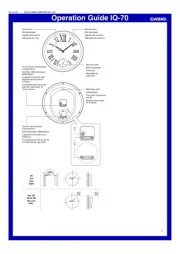
18 Juni 2025
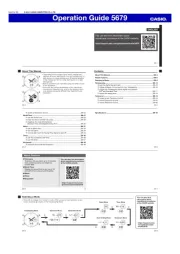
17 Juni 2025
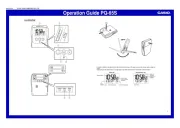
17 Juni 2025
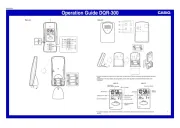
16 Juni 2025

16 Juni 2025
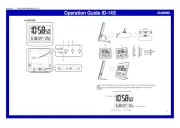
16 Juni 2025
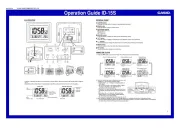
16 Juni 2025

16 Juni 2025
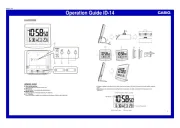
16 Juni 2025
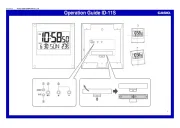
16 Juni 2025
Handleiding Horloge
- Just
- Michael Kors
- Alpina
- Olivia Burton
- Gc
- ESQ
- Rado
- Breo
- Hamilton
- Pyle
- Ascot
- Huawei
- Balmain
- Ade
- Nedis
Nieuwste handleidingen voor Horloge

5 Juli 2025

5 Juli 2025

4 Juli 2025

4 Juli 2025

4 Juli 2025

4 Juli 2025

4 Juli 2025

2 Juli 2025
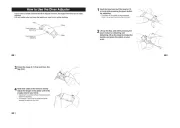
1 Juli 2025

21 Juni 2025